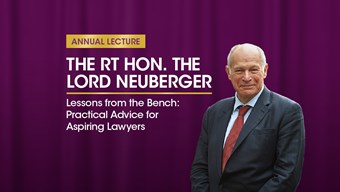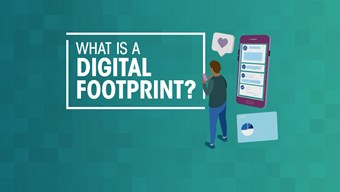The modern workplace has changed dramatically over the last couple of decades. Technology has advanced at an unprecedented speed, equality and inclusivity has improved and even modern work wellbeing has changed. How can employers keep up with such rapid transformation? Reverse mentoring, a concept which acknowledges the younger generation have just as much to teach the older generations, may be the future of employee development.
Written by Editorial Team. Published 4 October 2019. Last updated 9 August 2022.
What is reverse mentoring?
Traditional mentoring sees experience valued over everything else, leading to more mature employees often taking the younger work force under their wing to share their knowledge and skills. Reverse mentoring flips the traditional hierarchy of mentoring on its head. Junior employees that have skills to share become the mentors for more senior employees. As with most mentoring schemes, the learning process is often reciprocal but it’s a newer concept for the junior employee to lead the way.
Mentors are simultaneously provided with the opportunity to learn from their mentee’s experience, knowledge and skills. It can be considered a career development opportunity for both parties.
Why is reverse mentoring important?
Reverse mentoring helps build a genuine awareness of the barriers experienced by Black, Asian, Mixed Race and ethnically diverse employees. Companies and their leaders can improve race inequality by taking time to know employees they may otherwise have no interactions with. Successful establishment of reverse mentoring improves ethnically diverse employee engagement, overall working experience and retention.
John Watkins, employability director for The University of Law said “Reverse mentoring allows senior experienced figures to better appreciate the perspective of those that they manage and lead. In practice I have seen revisions to definitions of such words as ‘snowflake’ and ‘resilience’ as the context becomes better understood. More importantly this translates into a stronger capability to motivate with improved performance and satisfaction for both individuals and organisations.”
Patrice Gordon and reverse mentoring
Patrice Gordon is a highly qualified executive coach and personal development advocate, specialising in women's mentoring courses and reverse mentoring. She currently supports females in hospitality, travel and leisure. She works and builds the BAME network across Virgin Atlantic and the Virgin Group.
Gordon has over 10 years of experience at a senior level in the commercial airline and logistics, working with companies such as British Airways, Virgin Atlantic and Royal Mail. She has coached leaders across FTSE 250 businesses, and her commitment to helping others “be their best” places her as the most astute personal and business coach in the field. Her book ‘Reverse Mentoring: Removing Barriers and Building Belonging in the workplace’ is due to be published in November 2022. Her Ted Talk about Reverse Mentoring can be seen here.
How does reverse mentoring work?
The reverse mentoring framework includes five steps to create an effective relationship with a more junior team member.
1. Identify good mentoring partners
The mentoring partner should have skills or knowledge that the mentee needs. The mentor and mentee should have good chemistry to get the most out of the mentoring.
2. Set clear objectives
Both parties involved should identify all their expectations upfront. They need to be both committed and have aligned objectives.
3. Work on communication
Some people prefer to communicate via emails or instant messaging, while others may prefer to speak to a person face to face or make phone calls.
4. Be patient and open-minded
Both reverse mentoring partners need to be open to learning from one another. They need to remain respectful and listen actively without any preconceived ideas.
5. Measure your progress
Both parties should check regularly that they are happy with the relationship and they are getting the knowledge they need.
What are benefits of reverse mentoring?
- Increased confidence in dealing with senior stakeholders – this experience can have a hugely positive impact on younger employees
- Learning future trends – younger people are often tapped into trends that older generations aren’t aware of until the popularity has peaked, which could be too late for a business to make the most of a situation
- Saving money on external development – why rely on external training when skills are available within your workforce already?
- Increased millennial retention – these schemes reinforce just how highly your business regards their younger employees, leading them to feel more supported and appreciated and less likely to leave the company.
- Diversified skill sets and showcasing the mentor’s knowledge at the same time.
With so many positive benefits to reverse mentoring, expect to see more big businesses take up this initiative over the next few years.
What are drawbacks of reverse mentoring?
There are several potential drawbacks of reverse mentoring. Senior team members may not believe their younger mentors have valuable skills or knowledge to share. Alternatively, they may not be open to constructive feedback from people with less experience than themselves. Also, some employees might struggle to dedicate enough time to fully engage in reverse mentoring as their schedule is already too busy.
Why does reverse mentoring fail?
The top reasons why these reverse mentoring programs fail is that they are not prioritised by executives and business leaders. It’s enough that when some meetings are cancelled, the momentum quickly dwindles. When more executives start to benefit from mentoring, the more they will want to keep the momentum.
Which businesses use a reverse mentoring framework?
Proctor & Gamble
The household name of consumer goods discussed the potential of a mentoring scheme with women within their business, but it was fed back that they did not feel the traditional mentoring scheme would be of use to them. They fed back that higher management struggled to understand their work needs and once a reverse mentoring scheme was put into place, the company's issues with female staff retention diminished.
BBC
With the BBC losing touch with the under 30s and online streaming services starting to dominate the market, it’s not surprising that the BBC has introduced a reverse mentoring scheme. Managers in its education and radio departments were paired up with an employee under 30 to assist in helping them understand how to appeal to a younger audience.
KPMG
The professional financial services company launched their scheme in early 2018. A pilot scheme was driven out of their Afro-Caribbean employee network and, once its positive impact became clear, they made the necessary alterations for it to become successful as a larger scheme.
KPMG’s I&D senior lead, Edleen John, told Accountancy Age “We recognised that one of the key benefits was that it actually put junior colleagues in contact with quite senior people which they may not have worked with previously – this additional exposure has proven beneficial not just to their day to day jobs, but also with regards to specific skills needed on individual projects. So it was a way of also creating a form of traditional mentors or sponsors.”
Virgin Atlantic
Virgin Atlantic’s reverse mentoring programme was led by Patrice Gordon, a highly qualified executive coach and personal development advocate. It aimed to change viewpoints on gender, race and ability within the organisation. It was so successful even Richard Branson has recognised the importance of reverse mentoring, and the programme has recently been attributed with helping the company progress. Patrice Gordon even offered advice about reverse mentoring in a Ted Talk.
If you work for a company that is interested in joining our mentoring programme, visit our recruiters webpage.
How to set up a reverse mentoring program?
Creating a successful reverse mentoring program involves these three steps:
1. Define Purpose
Before you create a reverse mentoring program you need to have a clear idea of what you want to achieve and why you’re doing it. Is it to improve the company’s engagement and get more BAME employees involved? Is it to improve technical knowledge of senior members of the team?
Here are some common objectives that you might consider to create this program:
- Promoting a diverse and inclusive culture
- Improve employee retention rate
- Increasing employee engagement
- Increasing the skill set and knowledge of all employees
2. Agreement
A mentoring agreement should highlight:
- Goals and timelines - establishing clear goals and timelines is the most essential part of mentoring. It should also include how to track the progress of mentees.
- Clear expectations - the agreement should explain what mentor and mentee can expect from each other: for example, their time commitment and what kind of support and knowledge they can achieve.
- Honest communication - mentoring should involve open and transparent communication between mentor and mentee.
3. Matching Pairs
Selecting the right mentoring pair is essential to create a successful reverse mentoring program.
The program can have these options:
- Self matching - mentees find their mentor on their own.
- Admin matching - program selects mentees based on their matching goals.
- Hybrid matching - mixture of self and admin matching. When one type is not diverse enough to fulfil the program requirements.
How to prepare for reverse mentoring?
- Provide resources - include information about what participants can expect from the program, the proposed schedule, what is expected from them and what they need to accomplish.
- Prepare topics - some pairs will share common ground at the beginning. Some may go off topic, this list can help keep them on track:
- What are you hoping to get out of this mentorship program?
- What has your professional experience been like so far?
- Design a goal setting framework - provide a goal setting template that both members can fill out and refer to during each meeting.
The template should include:
- Short and long term goals for the mentee
- Timelines
- Key Performance Indicators (KPIs)
- How a mentor can help to achieve the KPIs
- How often the progress should be monitored
- Timelines - create a sample schedule of how often mentees should meet up and how long each session should be.
- Define a list of tasks - create sample tasks that both mentees should follow up.
- Create a feedback loop - establish a culture where constructive feedback is always welcome.
If you would like to learn more about mentoring, see our human resources postgraduate courses:
Get ready for the real world of business. Apply for one of our courses today.



